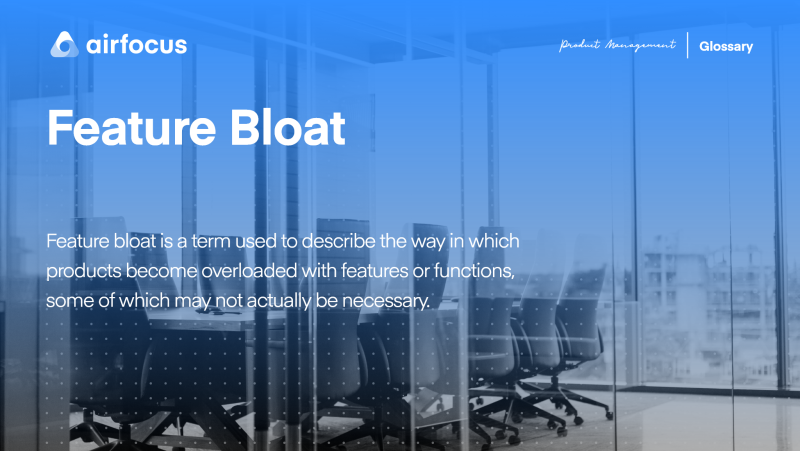Feature Bloat
What is feature bloat?
Definition of feature bloat
Feature bloat is a term used to describe the way in which products become overloaded with features or functions, some of which may not actually be necessary.
This can detract from the product’s initial purpose and leave users frustrated.
Feature bloat can happen to many different products, from smartphones and apps to cars and household appliances — and, to a certain extent, it’s easy to see how it happens. Manufacturers may be keen to differentiate themselves from their competitors by offering consumers what they perceive to be extra value.
By striving for competitive advantage, more and more features are added to the product until it strays too far from its USP, or the item’s overall performance is affected.
What are the common challenges that lead to feature bloat?
Businesses want their products to stand out in a competitive marketplace, and one way to achieve this is by offering innovative features. However, even if features are added with an aim to improve the user experience, the opposite can often result. Users may become confused by the added complexity of new features, or simply choose to not use them as they are unnecessary.
Feature bloat may occur when companies add new features through software updates or product upgrades, perhaps as a response to customer feedback. Yet these same businesses might neglect to remove other features to create space for those new ones, for a number of reasons.
First, removing features incurs a cost. Extra expenses may be hard to justify unless customers are up in arms over a product’s lack of space or reduced performance. There’s also the risk of upsetting those users who do use features others consider unnecessary or impacting the performance of additional features. Oftentimes, product teams that don’t regularly gather user feedback may not even realize that product bloat has crept in.
How can businesses avoid feature bloat?
The first step is to consider the ongoing price and work involved across a product’s lifecycle. Adding features may seem like a winning idea at the concept stage, but how much will it cost to develop and implement? And what about the potential expenses related to updates or fixing issues in the future?
It’s vital to bear these factors in mind before incorporating a feature into a product. Effective planning and prioritization are essential to ensure this analysis happens as standard within a product team.
Another key step in avoiding feature bloat is conducting in-depth user research. Which features genuinely meet a consumer's need? Which current ones inspire the most complaints? And does a feature’s absence or inclusion mean the customer will look to a competitor?
Finally, businesses must be willing to take bad features out. Continuing to update unpopular or dysfunctional features can make the user experience more complex than it has to be, potentially chasing valuable customers away.
Deciding to eliminate a feature can be difficult when your team has invested months of hard work and money into it, but if you believe it’s genuinely in the product or users’ best interest, take action.
When do you need to address feature bloat?
Feature bloat should be addressed continuously throughout a product’s lifecycle.
A key way of doing this is to have a regular program of customer research to determine whether your target users benefit from a feature being there, or not. If you have doubts, talk to users to test questionable features’ impact.
Be willing to take action on the results if it stands to produce a better product outcome, even if that means scaling back.

General FAQ

Glossary categories
Experience the new way of doing product management

Experience the new way of doing product management








